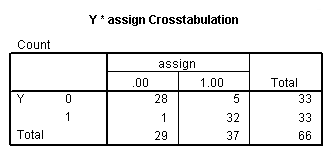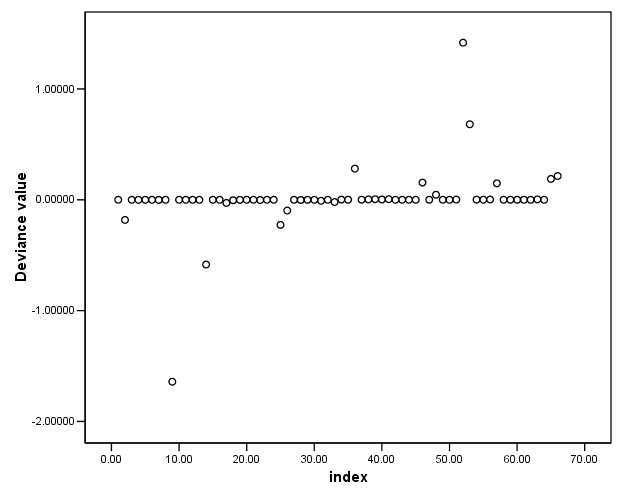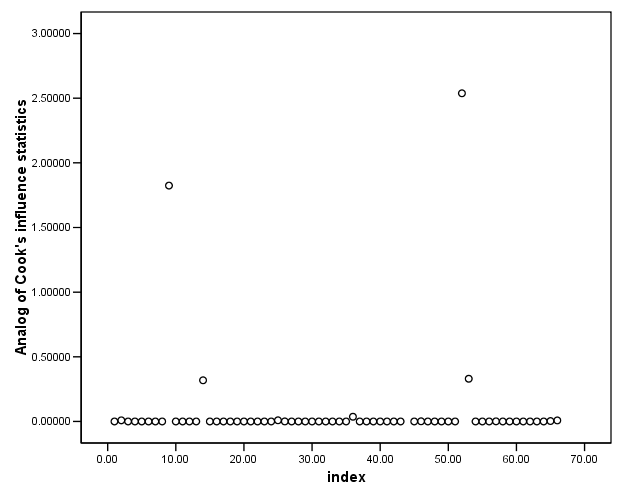Table 12.1, page 323. Financial Ratios of Solvent and Bankrupt Firms (First 10 observations).
get file 'd:p323.sav'. compute index = $casenum. exe. list /cases = 10.
y x1 x2 x3 index
0 -62.80 -89.50 1.70 1.00
0 3.30 -3.50 1.10 2.00
0 -120.80 -103.20 2.50 3.00
0 -18.10 -28.80 1.10 4.00
0 -3.80 -50.60 .90 5.00
0 -61.20 -56.20 1.70 6.00
0 -20.30 -17.40 1.00 7.00
0 -194.50 -25.80 .50 8.00
0 20.80 -4.30 1.00 9.00
0 -106.10 -22.90 1.50 10.00
Number of cases read: 10 Number of cases listed: 10
Table 12.2, page 324.
logistic regression y /method = enter x1 x2 x3 /print = summary ci(.95) /save dev(dr) cook(c).
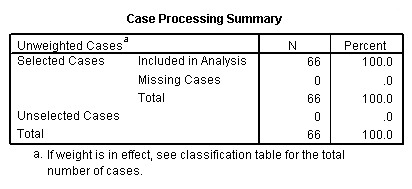

Block 0: Beginning Block
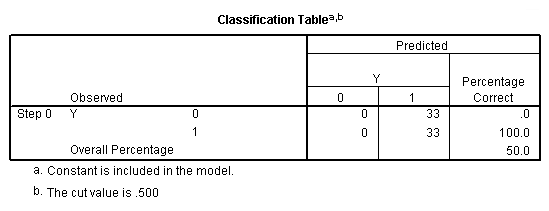


Block 1: Method = Enter
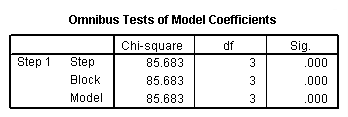
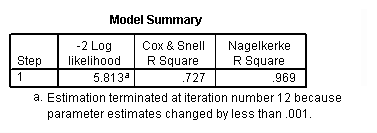
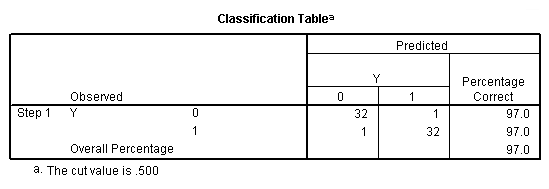

Figure 12.2, page 326.
NOTE: Figure is different than what is presented in the book.
graph /scatterplot = index with dr.
Figure 12.3, page 326.
NOTE: Figure is different than what is presented in the book.
graph /scatterplot = index with c.
Figure 12.4, page 327.
NOTE: SPSS does not have the influential measurement DG, change in the
chi-squared test statistics G when the ith observation is deleted.
Table 12.3, page 328. Output From the Logistic Regression Using x1 and x2.
logistic regression y /method = enter x1 x2 /print = summary ci(.95).
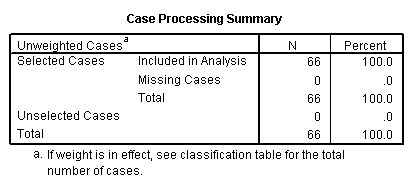

Block 0: Beginning Block
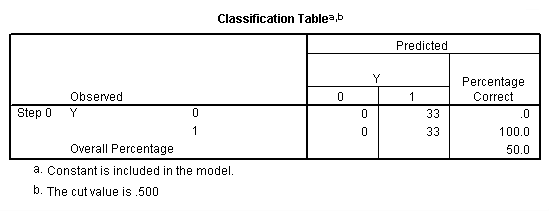


Block 1: Method = Enter
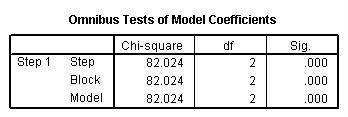
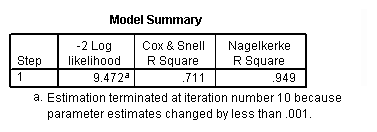
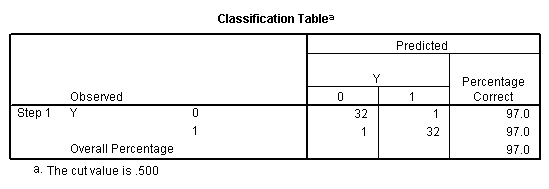

Table 12.4, page 328. Output from the logistic regression using x1.
logistic regression y /method = enter x1 /print = summary ci(.95).
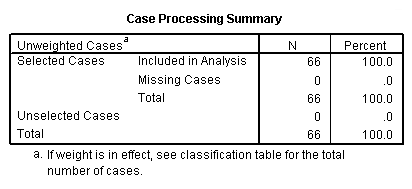

Block 0: Beginning Block



Block 1: Method = Enter
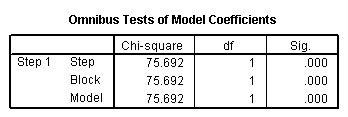
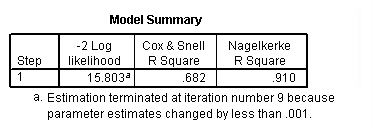
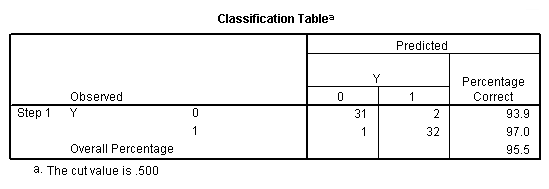

Table 12.5, page 331. Results from OLS Regression of Y on x1, x2 and x3.
regression /dependent = y /method enter = x1 x2 x3 /save pred(p).
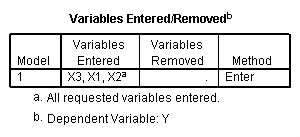


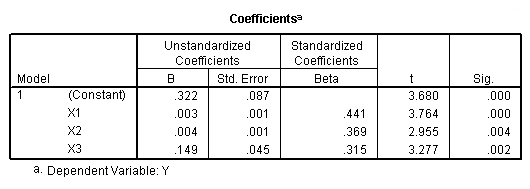
Table 12.6, page 332. Classification of Observations by Fitted Values.
compute assign = (p >= .5). exe. list y p assign /cases =10.
y p assign
0 -.00170 .00
0 .48066 .00
0 -.12212 .00
0 .30644 .00
0 .22883 .00
0 .14467 .00
0 .33313 .00
0 -.32057 .00
0 .51704 1.00
0 .11620 .00
Number of cases read: 10 Number of cases listed: 10
crosstabs /tables = y by assign.

